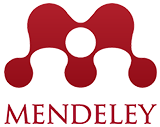The Use of Interpretation and Body Awareness to Enhance Client Self-Understanding in Counseling
Abstract
Keywords
Full Text:
PDFReferences
Adam, D. K., Bachrach, D. J., Counts, G. W., Eriksen, C. W., Farber, I. E., Fey, W. F., Gentry, G., Jones, M. R., Luchins, A. S., & Postman, L. (1954). Learning theory, personality theory, and clinical research: The Kentucky symposium. Wiley. https://psycnet.apa.org/record/1955-02313-000
Arafat, G. Y. (2019). Membongkar isi pesan dan media dengan content analysis. Alhadharah: Jurnal Ilmu Dakwah, 17(33), 32–48. https://doi.org/10.18592/alhadharah.v17i33.2370
Arikunto, S. (2010). Prosedur penelitian: Suatu pendekatan praktik (Edisi Revisi). PT Rineka Cipta.https://inlislite.uin-suska.ac.id/opac/detail-opac?id=8796
Beck, A. T. (1976). Cognitive therapy and the emotional disorders. International Universities Press. https://archive.org/details/cognitivetherapy0000beck
Brammer, L. M., & Shostrom, E. L. (1982). Therapeutic psychology: Fundamentals of counseling and psychotherapy (4th ed.). Prentice-Hall. https://www.worldcat.org/title/therapeutic-psychology-fundamentals-of-counseling-and-psychotherapy/oclc/8034590
Danandjaja, J. (2014). Metode penelitian kepustakaan. Antropologi Indonesia, 0(52). https://doi.org/10.7454/ai.v0i52.3318
Gendlin, E. T. (1978). Focusing. Everest House. https://focusing.org/gendlin/docs/gol_2145.html
Gordon, D. (1978). Therapeutic metaphors. Meta Publications. https://www.worldcat.org/title/therapeutic-metaphors/oclc/4132546
Grossman, D. (1964). Ego-activating approaches to psychotherapy. Psychoanalytic Review, 51, 65–88. https://psycnet.apa.org/record/1965-05608-001
Kaelan. (2017). Pendidikan Pancasila. Paradigma. https://onesearch.id/Record/IOS3370.000000001
Karpman, B. (1960). Objective psychotherapy. Journal of Clinical Psychology. https://www.worldcat.org/title/objective-psychotherapy/oclc/926953275
Kelly, G. A. (1955). The psychology of personal constructs (Vols. 1–2). Norton.
Link: https://www.worldcat.org/title/psychology-of-personal-constructs-a-theory-of-personality/oclc/562987520
Kirsh, C. (1973). The role of affect expression and defense in the character [Unpublished manuscript].
Luria, A. R. (1961). The role of speech in the regulation of normal and abnormal behaviour. Liveright. https://www.worldcat.org/title/role-of-speech-in-the-regulation-of-normal-and-abnormal-behaviour/oclc/557948391
Meichenbaum, D. (1974). Self-instructional training: A cognitive prosthesis for the ages. Human Development, 17(4), 273–280. https://doi.org/10.1159/000271350
Meichenbaum, D., Turk, D., & Burstein, S. (1975). The nature of coping with stress [Paper presentation]. NATO Conference on Stress and Anxiety, Korsør, Denmark.
Meichenbaum, D. (1977). Cognitive-behavior modification: An integrative approach. Plenum Press. https://doi.org/10.1007/978-1-4757-9739-8
Menninger, K. (1958). Theory of psychoanalytic technique. Basic Books. https://doi.org/10.1037/10843-000
Pearson, L. (Ed.). (1965). The use of written communications in psychotherapy. Charles C. Thomas. https://www.worldcat.org/title/use-of-written-communications-in-psychotherapy/oclc/2137565
Perls, F. S. (1969). Gestalt therapy verbatim. Real People Press. https://archive.org/details/gestalttherapyve00frit
Progoff, I. (1975). At a journal workshop. Dialogue House Library. https://www.worldcat.org/title/at-a-journal-workshop-the-basic-text-and-guide-for-using-the-intensive-journal-process/oclc/1333610
Shostrom, E. L., Knapp, L., & Knapp, R. R. (1976). Actualizing therapy: Foundations for a scientific ethic. EDITS Publishers. https://www.worldcat.org/title/actualizing-therapy-foundations-for-a-scientific-ethic/oclc/635852567
Tilden, F. (1977). Interpreting our heritage (3rd ed.). University of North Carolina Press. https://www.nps.gov/parkhistory/online_books/tilden/
DOI: https://doi.org/10.21107/widyagogik.v11i4.29983
Refbacks
- There are currently no refbacks.
Copyright (c) 2024 Idyana Adha, Rezki Hariko, Yeni Karneli

This work is licensed under a Creative Commons Attribution-ShareAlike 4.0 International License.












